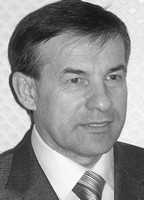Quantum energy method for diagnostics and competitive success forecasts in elite sports
Фотографии:
ˑ:
Teoriya i praktika fizicheskoy kultury №6 2017, pp.78 -82
Dr.Hab., Professor V.I. Sivakov1
PhD, Associate Professor S.A. Aitkulov1
PhD, Associate Professor I.F. Cherkasov1
1South Ural State University of Humanities and Education, Chelyabinsk
Objective of the study was to explore the benefits of the quantum energy method for the initiatives to improve the colour indices of the athletes’ energy systems in the education, training and competitive process in the individual and team sports. We assumed that the quantum energy method may be applied to rate the athletes’ functionality and workability and forecast their competitive performance in the individual and team sports by the colour indices of the energy systems. The quantum energy method gives the means to select the potentially most successful athletes for the upcoming competitions (including the team compositions of the most strong and energetic players having higher potential workability rates than their peers with relatively weaker tested competitive energy capacity). The quantum energy method facilitates the colour indices of the athletes’ energy systems being improved in a high-intensity training process; secures progress of a variety of physical qualities including strength, speed and coordination abilities; and effectively develops the following energy supply mechanisms: anaerobic-lactate, anaerobic-glycolytic, anaerobic-aerobic, and aerobic. It should be noted that individual colour indices of energy systems and energy centres are determined by the functionality levels ranked as the low, mean and high ones.
Keywords: athlete, quantum method, energy system, functionality improvement, competitive success, competitions.
References
- Gorokhov N.M. Issledovanie tsennostnykh orientatsiy yunykh legkoatletov na zdorovesberezhenie v protsesse nachalnoy sportivnoy podgotovki [Study of health value orientations of junior track and field athletes at initial training stage]. Uchenye zapiski un-ta im. P.F. Lesgafta, 2011, no. 3 (73), pp. 44–48.
- Makarenko V.G. Teoretiko-metodologicheskie i metodiko-tekhnologicheskie osnovy pedagogicheskogo upravleniya fizkulturnym obrazovaniem detey doshkolnogo vozrasta [Theoretical-methodological and methodical-technological basics of pedagogical management of physical culture education of preschoolers]. Chelyabinsk: Cirero publ., 2012, 220 p.
- Perepelyukova E.V. Novye ozdorovitelnye tekhnologii v fizkulturnoy praktike vuza [New health technologies in academic physical education practice]. Mater. 2-y Vseros. s mezhdunar. uchastiem nauch.-prakt. konf. "Aktualnye problemy fizicheskoy kultury i sporta v usloviyakh modernizatsii vysshey shkoly" [Proc. 2nd All-Rus. with intern. participation res.-pract. conf. "Actual problems of physical culture and sport within modernization of higher education"]. Chelyabinsk: Cirero publ., 2013, pp. 203-206.
- Sivakov V.I. Vzaimosvyaz mezhdu vneshnim prirodnym faktorom i psikhoemotsionalnym sostoyaniem sportsmenok v sorevnovatelnoy deyatelnosti [Relationship between external natural factor and psychoemotional state of female athletes in competitive activities]. Mir psikhologii, 2009, no. 2, pp. 194- 199.
- Sivakov V.I., Sivakov D.V. Prichina nestabilnogo vystupleniya biatlonistok v sorevnovaniyakh [Reason of Unstable Performance of Female Biathletes in Competitions]. Teoriya i praktika fiz. kultury, 2010, no. 9, pp. 66– 69.
- Terzi M.S., Saraykin D.A., Pavlova V.I., Kamskova J.G. Psikhofiziologicheskie determinanty sportivnogo masterstva edinobortsev [Psychophysiological Determinants of Sports Skills of Combatants]. Teoriya i praktika fiz. kultury, 2014, no. 12, pp. 66– 70.
- Terzi M.S., Lekontsev E.V., Saraykin D.A. Molekulyarno-geneticheskaya determinatsiya funktsionalnoy rabotosposobnosti edinobortsev raznykh kvalifikatsiy [Molecular genetic determination of functional performance of combatants of different skill levels]. Teoriya i praktika fiz. kultury, 2016, no. 7, pp. 21– 24.



 Журнал "THEORY AND PRACTICE
Журнал "THEORY AND PRACTICE